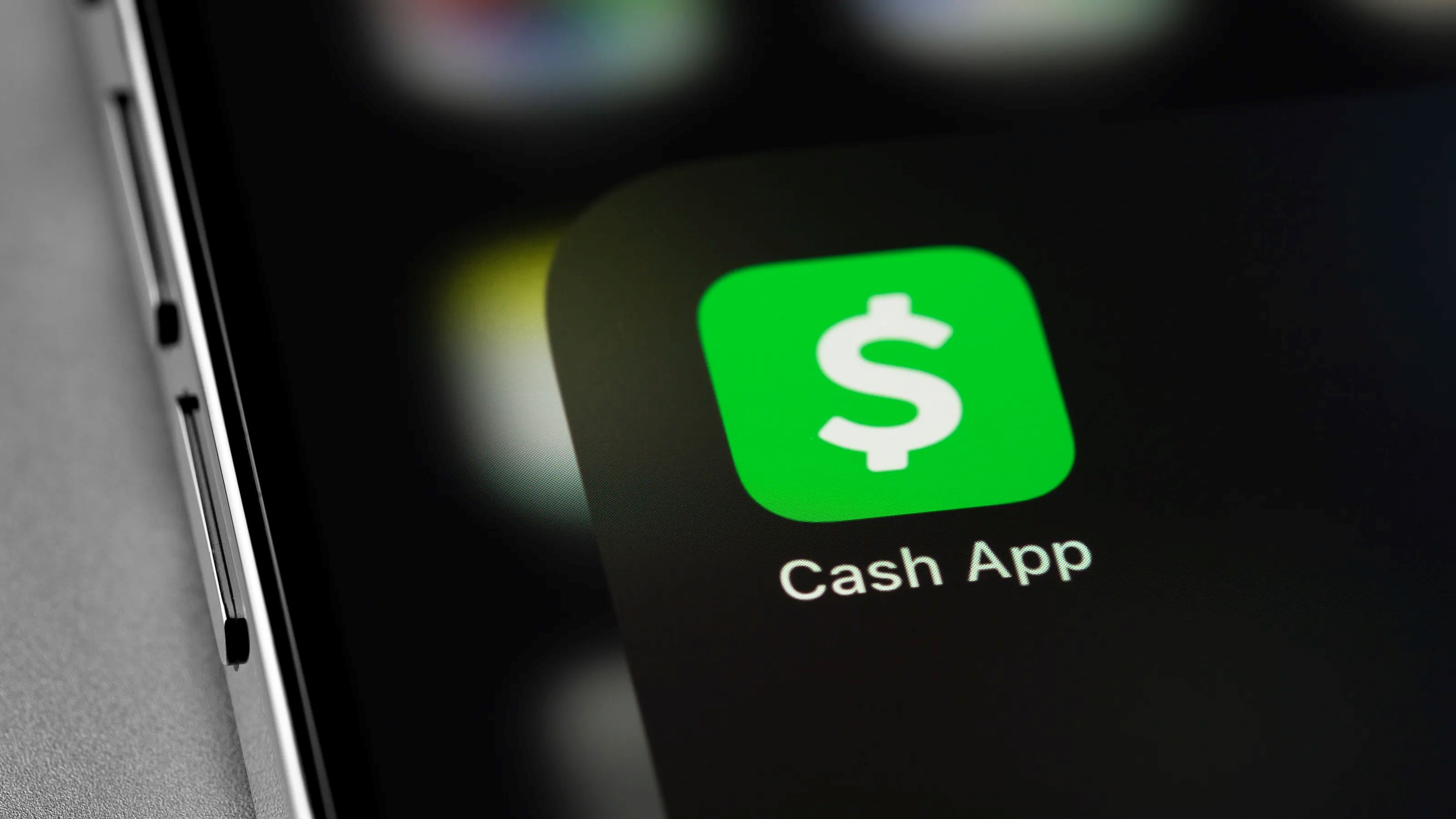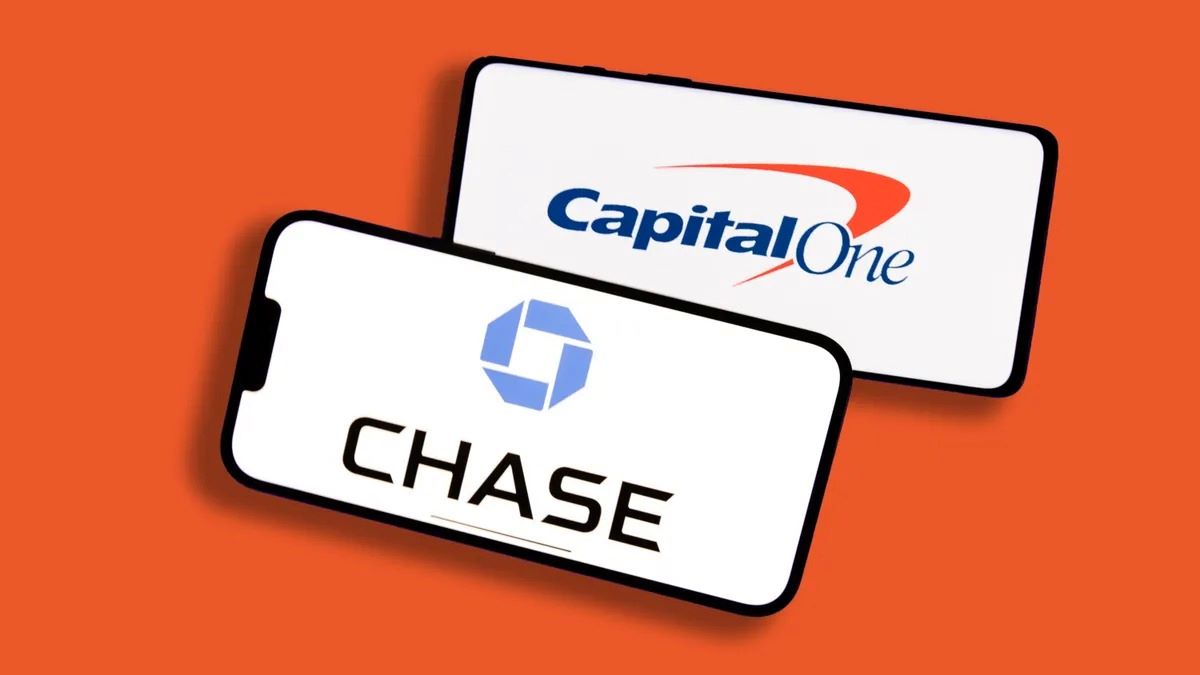

Finance
Why Was My Credit Card Payment Returned
Published: November 9, 2023
Learn why your credit card payment was returned and how it can affect your finances. Gain insights into the reasons behind payment rejections and find solutions to resolve the issue.
(Many of the links in this article redirect to a specific reviewed product. Your purchase of these products through affiliate links helps to generate commission for LiveWell, at no extra cost. Learn more)
Table of Contents
- Introduction
- Understanding Credit Card Payments
- Common Reasons for Returned Credit Card Payments
- Insufficient Funds
- Closed Account
- Credit Limit Exceeded
- Payment Processing Errors
- Fraudulent Activity
- Address Verification Issues
- Non-compliant Payment Instructions
- Communication Failures with the Bank
- Steps to Resolve Returned Credit Card Payments
- Contacting the Credit Card Issuer
- Checking Account Balance and Payment History
- Updating Payment Information
- Verifying Address and Contact Details
- Reviewing Payment Instructions
- Monitoring for Fraudulent Activity
- Communicating with the Bank and Payment Gateway
- Conclusion
Introduction
Managing credit card payments is an essential part of personal finance. Whether you’re making a purchase, paying off a balance, or settling monthly bills, it’s crucial to ensure that your credit card payments are processed without any issues. However, at times, you may find yourself in a situation where your credit card payment is returned. This can be frustrating and confusing, leaving you wondering why it happened and what steps to take next.
In this article, we will delve into the common reasons why credit card payments get returned and provide guidance on how to resolve these issues. It’s important to note that the exact reasons may vary depending on your individual circumstances and the policies of your credit card issuer. Nevertheless, understanding the common causes will help shed light on why your payment was returned and empower you to take the appropriate action.
Returned credit card payments can occur for various reasons, such as insufficient funds, a closed account, exceeding your credit limit, payment processing errors, fraudulent activities, address verification issues, non-compliant payment instructions, or communication failures with the bank. By familiarizing yourself with these potential factors, you can proactively address the situation and prevent future payment difficulties.
Throughout this article, we will provide practical steps to resolve returned credit card payments, including contacting the credit card issuer, checking your account balance and payment history, updating payment information, verifying address and contact details, reviewing payment instructions, monitoring for fraudulent activity, and communicating with the bank and payment gateway. By following these steps, you can navigate through the challenges faced when a credit card payment is returned and regain control over your finances.
Now, let’s dive deeper into each of these potential reasons for returned credit card payments and explore the steps to resolve them effectively.
Understanding Credit Card Payments
Before delving into the reasons for returned credit card payments, it is essential to understand the basics of how these payments work. When you make a purchase using your credit card, the payment is not immediately deducted from your bank account. Instead, the credit card issuer pays the merchant on your behalf, and you are required to repay the issuer at a later date.
Your credit card statement provides a summary of your transactions, including the amount owed and the due date for payment. It is important to pay at least the minimum required payment by the due date to avoid late fees and potential damage to your credit score. However, paying only the minimum payment may result in accruing interest charges on the remaining balance.
When you make a credit card payment, the funds are typically transferred electronically from your bank account to your credit card account. This process usually takes a few business days to complete. During this time, it is crucial to ensure that the payment goes through successfully and is not returned.
Returned credit card payments, also known as bounced payments, occur when the funds fail to reach your credit card account. This can happen due to various factors, and it is important to identify and resolve the underlying issue to prevent further complications.
Next, we will explore the common reasons why credit card payments get returned and discuss the steps you can take to resolve these issues effectively.
Common Reasons for Returned Credit Card Payments
There are several common reasons why credit card payments may be returned. Understanding these reasons can help you determine the cause of the issue and take appropriate steps to resolve it. Here are some of the most frequent causes for returned credit card payments:
1. Insufficient Funds:
This is one of the most common reasons why credit card payments are returned. If you do not have enough money in your bank account to cover the payment, it will be returned. It is crucial to ensure that you have sufficient funds in your account before making a credit card payment.
2. Closed Account:
If you close the bank account from which you make credit card payments, any payments scheduled after the account closure will be returned. Make sure to update your payment information if you switch banks or close your current account.
3. Credit Limit Exceeded:
If you have reached your credit limit on your credit card, any additional payments will be returned. It is important to keep track of your spending and manage your credit limit to avoid exceeding it.
4. Payment Processing Errors:
There can be various errors during the payment processing stage that can cause the payment to be returned. These errors can range from technical glitches to incorrect payment details. Double-checking your payment information and ensuring that it is accurate can help prevent payment processing errors.
5. Fraudulent Activity:
If your credit card issuer suspects fraudulent activity on your account, they may block or reject your payment to protect you from potential fraud. In such cases, it is crucial to contact your credit card issuer to resolve any security concerns and verify your identity.
6. Address Verification Issues:
Some credit card issuers require address verification for payments to go through successfully. If the address you provide does not match the address associated with the credit card account, the payment may be returned. Ensure that you provide the correct billing address when making a payment.
7. Non-compliant Payment Instructions:
Certain credit card issuers have specific guidelines or requirements for making payments. If you fail to follow these instructions, such as not including the correct reference or payment code, the payment may be returned. It is essential to carefully read and follow the payment instructions provided by your credit card issuer.
8. Communication Failures with the Bank:
Occasionally, there may be communication issues between your bank and the credit card issuer, resulting in a returned payment. These failures can be due to technical glitches or other connectivity issues. Contacting the bank and credit card issuer to resolve any communication problems can help in preventing returned payments.
Now that we have discussed the common reasons for returned credit card payments, let’s move on to the next section where we will explore the steps you can take to resolve these issues effectively.
Insufficient Funds
One of the most common reasons for a returned credit card payment is insufficient funds in your bank account. When you make a payment with your credit card, the funds are typically transferred from your bank account to your credit card account. If there isn’t enough money available in your bank account to cover the payment, it will be returned.
Having insufficient funds can happen for various reasons. It could be due to poor financial management, unexpected expenses, or simply miscalculating your available balance. Regardless of the cause, it’s important to address this issue promptly to avoid further complications.
If your credit card payment is returned due to insufficient funds, here are some steps you can take to resolve the issue:
1. Check Your Account Balance:
Begin by checking the balance in your bank account to confirm that there are insufficient funds. Take into account any pending transactions or upcoming payments that could impact your available balance.
2. Transfer Funds:
If you have another bank account with sufficient funds, consider transferring the necessary funds to the account that you use for credit card payments. This will ensure that you have enough money to cover the payment.
3. Adjust Your Payment Amount or Schedule:
If transferring funds is not an option, you may need to adjust your payment amount or reschedule the payment to a later date when you have sufficient funds in your account. Communicate with your credit card issuer to inquire about any available options for payment adjustments.
4. Review Your Budget and Expenses:
To avoid experiencing insufficient funds in the future, evaluate your budget and expenses. Look for areas where you can cut back or make adjustments to allocate more funds towards credit card payments. Creating a realistic and sustainable budget will help you manage your finances better.
5. Set Up Alerts and Reminders:
To prevent future returned payments due to insufficient funds, consider setting up alerts or reminders for when your credit card payment is due. This will prompt you to review your bank account and ensure that you have enough funds available to cover the payment.
Remember, maintaining sufficient funds in your bank account is crucial not only for credit card payments but for overall financial stability. By taking proactive steps to manage your finances and ensure that you have enough funds available, you can avoid returned credit card payments and maintain a healthy financial standing.
Closed Account
Another common reason for a returned credit card payment is when the bank account you used to make the payment has been closed. If you close your bank account or switch to a different bank, any payments scheduled after the account closure will be returned.
When you close an account, it is crucial to update your payment information with your credit card issuer to avoid any payment disruptions. Failure to do so can result in returned credit card payments and possible late fees or penalties.
If your credit card payment was returned because your account was closed, here are some steps you can take to resolve the issue:
1. Verify Account Closure:
Confirm that your bank account has indeed been closed. Some banks may allow you to keep your account open until all pending transactions are completed. If this is the case, ensure that any outstanding payments are cleared before closing your account.
2. Update Payment Information:
Contact your credit card issuer and provide them with the updated bank account information. This may include the new account number, routing number, and any additional details required for making payments. Ensure that the information is accurate to prevent future returned payments.
3. Reschedule the Payment:
If your credit card issuer allows you to make changes to the payment schedule, consider rescheduling the payment to a later date when you have opened a new bank account. This will give you enough time to update your payment information and avoid returned payments.
4. Communicate with Your Credit Card Issuer:
It is essential to inform your credit card issuer about the closure of your old bank account and provide them with the necessary details of the new account. This way, they can update their records and ensure that your future payments are processed correctly.
5. Be Mindful of Automatic Payments:
If you had set up automatic payments from your old bank account, make sure to cancel them to prevent any future failed payments. Set up new automatic payments using your updated bank account information if desired.
Remember, keeping your payment information up to date is crucial to avoid returned credit card payments. Regularly review and update your payment details with your credit card issuer whenever there are changes to your banking information to ensure smooth payment processing.
Credit Limit Exceeded
Exceeding your credit limit is another common reason for a returned credit card payment. Every credit card comes with a maximum credit limit, which is the total amount you can borrow or spend using the card. If you surpass this limit, any additional payments will be returned, and you may face penalties or fees from your credit card issuer.
It’s important to keep track of your spending and manage your credit limit wisely to avoid exceeding it. Here are some steps you can take if your credit card payment was returned due to exceeding your credit limit:
1. Check Your Credit Limit:
Review your credit card statement or contact your credit card issuer to confirm the exact credit limit on your card. This will help you understand how close you are to reaching your limit and make informed decisions regarding your spending.
2. Pay Down Your Balance:
If you have exceeded your credit limit, make a payment towards your balance as soon as possible. This will free up some available credit and bring you closer to your credit limit. It’s advisable to pay more than the minimum payment to reduce your balance faster.
3. Monitor Your Spending:
Keep a close eye on your spending and make sure you do not surpass your credit limit again. Consider creating a budget and tracking your expenses to ensure you stay within your limits. Avoid unnecessary purchases or luxuries until you have paid down your balance.
4. Request a Credit Limit Increase:
If you consistently find yourself approaching or reaching your credit limit, you may want to consider requesting a credit limit increase from your credit card issuer. This can provide you with more available credit to accommodate your financial needs.
5. Consider Multiple Payments:
If you have a large purchase or expense coming up, it may be beneficial to make multiple smaller payments throughout the month instead of a single large payment. This can help you manage your credit limit more effectively and avoid exceeding it.
Remember, managing your credit card wisely involves staying within your credit limit and being mindful of your spending habits. By keeping a close eye on your credit limit and taking appropriate actions to manage it, you can prevent returned credit card payments and maintain a healthy financial status.
Payment Processing Errors
Payment processing errors can occur for various reasons, leading to a returned credit card payment. These errors can range from technical glitches to incorrect payment details, and they can be frustrating to deal with. However, there are steps you can take to resolve payment processing errors and ensure your credit card payments are processed successfully.
1. Double-Check Payment Information:
If your credit card payment was returned due to a processing error, start by reviewing the payment information you provided. Ensure that the credit card number, expiration date, CVV, and billing address are all entered correctly. Even a small mistake in any of these details can result in a failed payment.
2. Verify Sufficient Funds:
Confirm that you have enough funds in your bank account to cover the payment. Insufficient funds can lead to a processing error and a returned payment. Double-check your account balance to ensure that there are no issues on that front.
3. Retry the Payment:
If you suspect that the processing error was a temporary issue, try making the payment again. Close any open browser windows, clear your browser cache, and start the payment process from the beginning. Sometimes, a simple refresh can help resolve processing errors.
4. Contact the Credit Card Issuer:
If the payment continues to encounter processing errors, it is advisable to contact your credit card issuer and inform them about the issue. They can investigate whether there are any underlying technical problems on their end and help troubleshoot the payment processing error.
5. Consider Alternate Payment Methods:
If you are unable to resolve the processing error for your credit card payment, consider using an alternate payment method. This could involve making a payment through a different credit card or opting for a different payment platform like PayPal or direct bank transfer, if available.
6. Keep Documentation:
Throughout the process of resolving a payment processing error, it is important to keep proper documentation. This includes saving any confirmation numbers, screenshots, or transaction details related to the payment. Having this information will be helpful in case you need to provide evidence or reference in future communication with your credit card issuer or payment processor.
Remember, payment processing errors can be frustrating, but taking immediate action and communicating with the relevant parties will help resolve the issue. By being proactive in addressing payment processing errors, you can ensure that your credit card payments are processed smoothly and avoid returned payments.
Fraudulent Activity
One alarming reason for a returned credit card payment is suspected fraudulent activity on your account. Credit card issuers have sophisticated systems in place to detect and prevent fraudulent transactions, and if they suspect any unauthorized activity, they may block or reject payments for your safety.
While it can be unsettling to experience a returned payment due to fraudulent activity, it is essential to act quickly to address the issue and protect your finances. Here are some steps you can take if your credit card payment is returned due to suspected fraudulent activity:
1. Contact Your Credit Card Issuer:
Immediately get in touch with your credit card issuer to notify them of the returned payment and discuss the suspected fraudulent activity. They will guide you through the necessary steps to protect your account and verify your transactions.
2. Verify Recent Transactions:
Carefully review your recent credit card transactions to identify any unauthorized or unfamiliar charges. Inform your credit card issuer about any suspicious transactions you come across to aid in their investigation. They may request additional information or documentation related to the transactions.
3. Freeze Your Card:
To prevent further fraudulent transactions, consider requesting your credit card issuer to temporarily freeze your card. This will disable any unauthorized usage until the issue is resolved, and a new card can be issued if needed.
4. Monitor Your Credit Report:
Regularly monitor your credit report for any unfamiliar accounts or inquiries. This can help identify potential fraudulent activity beyond your credit card and allow you to take appropriate measures to protect your overall financial well-being.
5. Follow Up with the Credit Card Issuer:
Stay in regular communication with your credit card issuer to monitor the progress of their investigation into the fraudulent activity. They may request additional information or provide updates on the status of your account.
6. Enhance Security Measures:
Review your online security measures and consider implementing additional safeguards. This can include using unique and strong passwords, enabling two-factor authentication, and being cautious about sharing your credit card information online or over the phone.
Fraudulent activity can be a distressing experience, but taking immediate action and working closely with your credit card issuer can help mitigate the damage and secure your account. Remember, your credit card issuer is there to assist you in these situations and has dedicated resources to handle fraudulent activity effectively.
Address Verification Issues
Address verification is an important part of the payment process, and any discrepancies or errors in the provided address can result in a returned credit card payment. This security measure is in place to protect against unauthorized transactions and ensure that the payment is being made by the rightful cardholder.
If your credit card payment is returned due to address verification issues, there are steps you can take to resolve the problem:
1. Confirm Your Billing Address:
Double-check the billing address associated with your credit card account. Ensure that the address you are using for your payment matches the billing address on file. If you have recently moved or changed addresses, make sure to update your address with your credit card issuer.
2. Provide Accurate Information:
When making a payment, carefully enter your address information, including the correct street number, apartment number, and postal code. Even a small error can cause the payment to be returned. Pay attention to the format required by the payment portal or enter it exactly as it appears on your credit card statement.
3. Communicate with the Merchant:
If you are experiencing address verification issues with a specific merchant, contact their customer support to address the problem. They can guide you through the verification process or provide alternative payment options, if available.
4. Contact Your Credit Card Issuer:
If you consistently encounter address verification issues with multiple merchants, it may be necessary to contact your credit card issuer to investigate the problem further. They can verify the accuracy of your address on file and troubleshoot any issues that may be causing the address verification failures.
5. Use an Alternative Payment Method:
If you continue to experience address verification issues and are unable to resolve them, consider using an alternative payment method such as PayPal, Apple Pay, or a different credit card. These payment options may have different address verification procedures, providing an alternative solution to complete your transaction.
Address verification is a crucial security measure that aims to protect both merchants and consumers from fraudulent transactions. By ensuring accurate address information and resolving any address verification issues promptly, you can avoid returned credit card payments and complete your transactions smoothly.
Non-compliant Payment Instructions
Some credit card issuers have specific guidelines or requirements when it comes to making payments. If you fail to follow these instructions correctly, your payment may be returned. Non-compliant payment instructions can include providing incorrect payment codes, references, or failing to include any required information.
If your credit card payment is returned due to non-compliant payment instructions, here are steps you can take to resolve the issue:
1. Review Payment Instructions:
Carefully read and review the payment instructions provided by your credit card issuer. Take note of any specific payment codes, references, or other details that are required when making a payment.
2. Verify Payment References or Codes:
Ensure that you enter the correct payment references or codes provided by your credit card issuer. Failure to include these correctly can result in a returned payment. Double-check the required format and make sure there are no typos or errors.
3. Contact Your Credit Card Issuer:
If you are unsure about the payment instructions or have encountered issues despite following them correctly, it is advisable to contact your credit card issuer for clarification. They can provide guidance on any specific requirements or alternative payment methods that can be used.
4. Update Payment System or Portal:
If you are using an online payment system or portal, ensure that you have the latest version or update. In some cases, older versions may not have the necessary features or may not be compatible with the specific payment instructions.
5. Retry the Payment:
If you discover that you did not adhere to the required payment instructions, you may attempt to make the payment again, ensuring that you follow the instructions correctly this time.
6. Seek Assistance from Customer Support:
If you are still experiencing difficulties, contact the customer support of the payment system or portal you are using. They can help troubleshoot any technical issues and guide you through the payment process.
Remember, following the payment instructions provided by your credit card issuer is essential to ensure that your payment is processed correctly. By carefully reviewing and adhering to these instructions, you can avoid returned credit card payments resulting from non-compliant payment instructions.
Communication Failures with the Bank
Communication failures between your bank and credit card issuer can lead to returned credit card payments. These failures may occur due to technical glitches, connectivity issues, or miscommunication between the two entities. While frustrating, there are steps you can take to address these communication failures and resolve the issue:
1. Confirm Active Communication Channels:
Ensure that your contact information, such as your phone number and email address, is up to date with both your bank and credit card issuer. This will ensure that you receive important notifications and can be easily reached in case of any communication issues.
2. Contact Your Bank:
If you suspect communication failures with your bank, reach out to their customer support or visit the nearest branch to inquire about any ongoing issues or disruptions in their services. They can provide you with information and assistance, and may also be able to liaise with your credit card issuer if needed.
3. Contact Your Credit Card Issuer:
If you believe communication failures are occurring between your bank and credit card issuer, contact your credit card issuer directly. Notify them of the returned payment and any communication issues you are experiencing. They can investigate and work to resolve the issue from their end.
4. Use Alternate Communication Channels:
If you are having difficulty reaching your bank or credit card issuer through one communication channel, try using an alternate method. For example, if you are unable to reach them via phone, try sending an email or using their online chat support. Explore different channels to ensure effective communication.
5. Document Communication Attempts:
Keep a record of your communication attempts, including timestamps, names of representatives spoken to, and any relevant details. This documentation will be helpful in case you need to escalate the issue or provide evidence of your efforts to resolve the communication failures.
6. Seek Assistance from Consumer Protection Agencies:
If communication failures persist, you can consider reaching out to consumer protection agencies or regulatory bodies that oversee banks and credit card issuers. They can provide guidance, help in resolving the issue, and ensure that your concerns are addressed appropriately.
Communication failures between your bank and credit card issuer can be frustrating, but by taking proactive steps and reaching out to the appropriate parties, you can work towards resolving these issues. Effective communication is essential to ensure that your credit card payments are processed smoothly and to avoid any future returned payments.
Steps to Resolve Returned Credit Card Payments
When your credit card payment is returned, it’s important to take immediate action to resolve the issue and prevent any further complications. While the specific steps may vary depending on the reason for the returned payment, here is a general guide to help you navigate through the process:
1. Contacting the Credit Card Issuer:
Reach out to your credit card issuer as soon as you become aware that your payment has been returned. Explain the situation and provide any necessary details or documentation they may require. They can guide you through the specific steps needed to resolve the issue.
2. Checking Account Balance and Payment History:
Review your bank account balance to ensure that you have sufficient funds available. Additionally, check your payment history to verify if the payment was deducted or returned. This information can help in determining the cause of the returned payment.
3. Updating Payment Information:
If there have been changes to your bank account, such as switching banks or closing an account, update your payment information with your credit card issuer. Provide them with the updated account details to ensure that future payments are processed correctly.
4. Verifying Address and Contact Details:
Confirm that the address and contact details associated with your credit card account are accurate. Address verification issues or communication failures can lead to returned payments, so it is important to have the correct information on file.
5. Reviewing Payment Instructions:
Carefully read and follow the payment instructions provided by your credit card issuer. Ensure that you provide the correct payment references, codes, or other required information. Non-compliant payment instructions can result in returned payments, so it is crucial to adhere to the guidelines.
6. Monitoring for Fraudulent Activity:
Regularly monitor your credit card account for any signs of fraudulent activity. Report any unauthorized transactions to your credit card issuer immediately. They can investigate the issue, reverse any fraudulent charges, and take appropriate measures to protect your account.
7. Communicating with the Bank and Payment Gateway:
If there are any communication failures or issues with your bank or payment gateway, reach out to both parties to resolve the problem. Provide them with the necessary information, document your communication attempts, and request their assistance in processing the payment correctly.
By following these steps, you can address returned credit card payments effectively. However, it’s important to keep in mind that the exact resolution process may differ depending on the specific circumstances and policies of your credit card issuer. Stay in communication with them throughout the resolution process and follow any additional instructions they provide.
Contacting the Credit Card Issuer
When faced with a returned credit card payment, it is crucial to contact your credit card issuer promptly. The credit card issuer’s customer support team is there to assist you in resolving the issue and ensuring that your payment is processed correctly. Here are the steps to follow when contacting your credit card issuer:
1. Collect all Relevant Information:
Gather all pertinent information related to your returned payment, including the date and amount of the payment, any error messages received, and any documentation that can help explain the issue. This will allow you to provide the credit card issuer with the necessary details during your conversation.
2. Find the Appropriate Contact Information:
Locate the contact information for your credit card issuer’s customer support. This can usually be found on the back of your credit card, the credit card issuer’s website, or your monthly statement. Ensure that you have the correct phone number or email address to reach out to them.
3. Call or Email Customer Support:
Contact the customer support team through the provided phone number or email address. Clearly explain the nature of the issue, stating that your credit card payment was returned, and provide them with the relevant details you collected earlier. Be prepared to answer any additional questions they may have to help resolve the issue.
4. Follow the Instructions Provided:
Listen carefully to the instructions provided by the customer support representative. They may ask for additional information, request documentation, or guide you through specific steps to rectify the returned payment. Follow their instructions closely to ensure a swift resolution.
5. Document the Conversation:
While speaking with the customer support representative, take notes documenting the date, time, name of the representative, and a summary of the conversation. These notes can serve as useful reference points if you need to follow up on the progress of the resolution or if there are any discrepancies later on.
6. Follow up if necessary:
If the issue is not resolved or if there are further complications, don’t hesitate to follow up with the credit card issuer. Use the reference number or any other information provided during your initial contact to ensure effective communication and continuity in resolving the returned payment.
Contacting your credit card issuer is the first and essential step in resolving a returned credit card payment. They have the knowledge and resources to investigate the issue, provide guidance, and help rectify the problem. By promptly reaching out to them, you can expedite the resolution process and ensure that future payments are processed smoothly.
Checking Account Balance and Payment History
When you encounter a returned credit card payment, it is important to assess your account balance and review your payment history to better understand the underlying issue. Conducting these checks will help you identify potential discrepancies and take appropriate steps to resolve them. Here are the key steps to follow:
1. Verify Your Account Balance:
Firstly, confirm that you have sufficient funds in your bank account to cover the payment. Log in to your online banking portal or check your bank statement to review your current balance. Ensure that the funds are available to process the payment.
2. Examine the Returned Payment Details:
Take note of the specific details related to the returned payment, such as the date, amount, and any error messages received. These details will be essential when contacting your credit card issuer to discuss the issue and provide accurate information.
3. Review Your Payment History:
Thoroughly examine your payment history to identify any irregularities. Look for previous payments that were successfully processed and any returned payments that may have occurred in the past. This evaluation can help determine if there is a recurring issue or if the returned payment is an isolated incident.
4. Consider Pending Transactions:
Take into account any pending transactions that may have affected your account balance. These can include checks, transfers, or other payments that have not yet been processed. Assessing pending transactions will give you a comprehensive view of your current financial situation.
5. Contact Your Bank:
If there are inconsistencies in your account balance or if you identify any unauthorized transactions, reach out to your bank immediately. Notify them of the returned payment and provide them with the relevant details. They can help investigate and address any potential issues with your account.
6. Document Your Findings:
Take detailed notes of your account balance, payment history, and any other relevant information you uncover during your review. These notes will serve as a useful reference when discussing the issue with your credit card issuer or if you need to follow up on the progress of the resolution.
By thoroughly checking your account balance and payment history, you can gain valuable insights into the reasons for the returned credit card payment. Any discrepancies or unauthorized transactions should be addressed immediately with your bank, while accurate documentation will support an effective resolution process. Understanding your financial situation will help you navigate through the necessary steps to resolve the issue and prevent any further complications.
Updating Payment Information
Updating your payment information is crucial when addressing a returned credit card payment. If there have been changes to your bank account, such as switching banks, closing an account, or obtaining a new credit card, it is necessary to provide your credit card issuer with the updated information. Here are the steps to follow when updating your payment information:
1. Contact Your Credit Card Issuer:
Reach out to your credit card issuer’s customer support as soon as possible. Notify them that you need to update your payment information and explain the reason for the update. They will guide you through the process and inform you of any additional documentation or steps required.
2. Provide Updated Bank Account Details:
If you have switched banks or opened a new bank account, provide your credit card issuer with the updated account details. This includes the new account number, routing number, and any other relevant information necessary to make payments from the new account.
3. Verify Credit Card Information:
If you have obtained a new credit card, ensure that your credit card issuer has the correct credit card information on file. Provide them with the new credit card number, expiration date, and CVV (security code) to update their records.
4. Authenticate Your Identity:
For security purposes, your credit card issuer may require you to verify your identity before updating any payment information. This could involve answering security questions, providing personal identification information, or providing a copy of a government-issued ID.
5. Update Automatic Payment Authorizations:
If you have set up automatic payments using your credit card, make sure to update the relevant accounts or services with your new payment information. This includes online platforms, subscription services, or any other entities that collect payments automatically.
6. Verify the Changes:
Double-check with your credit card issuer to confirm that the payment information has been successfully updated. It’s essential to ensure that the changes have been accurately reflected in their system to prevent any future returned payments.
By promptly updating your payment information, you can avoid the recurrence of returned credit card payments due to outdated account details. Maintaining up-to-date payment information ensures that your payments are processed without any disruptions and helps you maintain a healthy financial relationship with your credit card issuer.
Verifying Address and Contact Details
Verifying your address and contact details is a crucial step when dealing with a returned credit card payment. Address verification is a security measure implemented by credit card issuers to ensure that payments are made by the rightful cardholder. If there are discrepancies or errors in the provided address or contact information, it can result in a returned payment. Here are the steps to follow to verify your address and contact details:
1. Review Your Billing Address:
Check the billing address associated with your credit card account. Ensure that it is accurate and up to date. This is the address where your credit card statements and important communications will be sent. Any discrepancies in the address provided during the payment process can lead to returned payments.
2. Confirm the Contact Details on File:
Review the contact details on file with your credit card issuer. Ensure that your phone number and email address are current and accurate. These contact details are critical for receiving important notifications and communications regarding your credit card account.
3. Verify Address Format:
Ensure that the address you provide during the payment process is formatted correctly based on the postal standards of your country. This includes the accurate street number, street name, postal code, and any additional unit or apartment numbers.
4. Update Address or Contact Information:
If you have moved or the address and contact details on file are incorrect, update the information with your credit card issuer. Contact their customer support and provide them with the accurate and up-to-date address and contact details.
5. Confirm Address Verification Methods:
Check with your credit card issuer to understand the specific address verification methods they employ. Some issuers may use third-party services to validate addresses, while others may require additional identification documents. Familiarize yourself with the verification process to ensure a smooth payment experience.
6. Document Address and Contact Information:
Maintain a record of the correct address and contact details you provide to your credit card issuer. This documentation serves as proof of the accuracy of the information shared and can be useful for future reference or dispute resolution.
By verifying and maintaining accurate address and contact details, you can reduce the likelihood of returned credit card payments due to address verification issues. This ensures that your payments are processed smoothly and without any interruptions, allowing you to maintain a healthy financial relationship with your credit card issuer.
Reviewing Payment Instructions
Reviewing the payment instructions provided by your credit card issuer is essential to ensure that your payments are processed correctly and to avoid returned credit card payments. Each credit card issuer may have specific guidelines or requirements for making payments, and failing to follow these instructions accurately can result in payment issues. Here are the steps to follow when reviewing payment instructions:
1. Read the Instructions Carefully:
Thoroughly read and understand the payment instructions provided by your credit card issuer. Pay close attention to any specific details, requirements, or guidelines mentioned in the instructions.
2. Identify Required Payment Information:
Take note of any required payment information, such as payment codes, references, or additional details that need to be included when making a payment. These details are vital to ensure that your payment is associated correctly with your credit card account.
3. Double-Check Payment Codes or References:
Verify that you have the correct payment codes or references provided by your credit card issuer. These codes or references help identify your payment and ensure that it is applied to the correct account. Ensure that you enter them accurately when making the payment.
4. Check the Payment Amount:
Confirm the required payment amount mentioned in the instructions. Ensure that the payment you make matches the specified amount. Avoid overpaying or underpaying, as it can cause issues with the processing of your payment.
5. Review Payment Deadlines:
Take note of any payment deadlines mentioned in the instructions. By adhering to the specified deadline, you can ensure that your payment is processed on time and avoid any late payment fees or penalties.
6. Understand Payment Method Options:
Be aware of the different payment methods accepted by your credit card issuer. Understand whether they accept payments via online platforms, bank transfers, or other payment gateways. If multiple options are available, choose the one that is most convenient for you.
7. Seek Clarification if Necessary:
If you have any questions or need further clarification regarding the payment instructions, contact your credit card issuer’s customer support. They will be able to provide you with the information you need to ensure a successful payment process.
Reviewing payment instructions helps prevent returned credit card payments and ensures a smooth payment transaction. By carefully following the instructions provided by your credit card issuer, you can make payments that are accurately processed and avoid any potential disruptions in your credit card account.
Monitoring for Fraudulent Activity
Monitoring your credit card account for any signs of fraudulent activity is essential for protecting your financial well-being. Fraudulent activity can lead to unauthorized transactions and potential financial losses. By actively monitoring your credit card account, you can detect and address any fraudulent activity promptly. Here are the steps to take to monitor for fraudulent activity:
1. Regularly Review Your Account Activity:
Regularly review your credit card account activity online or through mobile banking apps. Carefully examine each transaction to ensure that you recognize and authorize them. Be on the lookout for any unfamiliar or suspicious charges.
2. Set Up Account Alerts:
Take advantage of account alert features provided by your credit card issuer. These alerts can notify you of any unusual account activity, such as large transactions or transactions made in foreign countries. Set up alerts through email, text messages, or push notifications to stay informed about any potential fraudulent activity.
3. Report Suspicious Activity Immediately:
If you detect any unauthorized or suspicious transactions, report them to your credit card issuer immediately. Contact their customer support and provide them with the details of the transaction. They will investigate the issue, take appropriate action, and guide you through the resolution process.
4. Monitor Your Credit Score:
Regularly check your credit score through reputable credit reporting agencies. A sudden drop in your credit score can be an indication of fraudulent activity. Monitor your credit history and address any discrepancies promptly by contacting the credit reporting agencies and your credit card issuer.
5. Be Cautious of Phishing Attempts:
Be vigilant against phishing attempts via email, phone calls, or text messages. Fraudsters may try to obtain your credit card information or personal details through deceptive means. Be cautious when sharing sensitive information and verify the legitimacy of any communication that requests such information.
6. Secure Your Personal Information:
Take steps to protect your personal and financial information. Use strong and unique passwords for your credit card accounts and enable two-factor authentication whenever possible. Avoid sharing your credit card information or personal details on unsecured websites or unfamiliar platforms.
Monitoring for fraudulent activity is an ongoing process that requires vigilance and proactive measures. By staying vigilant, promptly reporting any suspicious activity, and taking steps to secure your personal information, you can minimize the risk of falling victim to fraudulent activities and protect your financial health.
Communicating with the Bank and Payment Gateway
Effective communication with your bank and payment gateway is crucial for resolving issues related to returned credit card payments. Whether the issue stems from technical glitches, connectivity problems, or miscommunication, proper communication can help in resolving the problem promptly. Here are the steps to follow when communicating with the bank and payment gateway:
1. Gather Relevant Information:
Before contacting your bank or payment gateway, gather all relevant information related to the returned credit card payment. This includes the payment details, error messages received, and any supporting documents or screenshots that can aid in explaining the issue.
2. Contact Your Bank:
If you suspect an issue with your bank, reach out to their customer support. Explain the situation, clearly stating that your credit card payment was returned, and provide them with the relevant details. They can investigate the issue from their end and determine any possible solutions.
3. Reach Out to the Payment Gateway:
If the payment issue involves a specific payment gateway or online platform, contact their customer support or merchant services. Explain the situation and provide them with the necessary details. They can investigate the payment processing, troubleshoot any technical issues, and provide guidance on resolving the returned payment.
4. Document Your Communications:
While communicating with the bank and payment gateway, it is important to take notes of important points discussed during the conversation. Document the date, time, names of representatives spoken to, and a summary of the conversation. This documentation will be useful if you need to reference the details or follow up on the progress of the resolution.
5. Follow-Up as Needed:
If the issue is not resolved or requires further attention, don’t hesitate to follow up with both the bank and payment gateway. Use the reference numbers or any other information provided during your initial contact to ensure effective communication and continuity in resolving the returned payment.
6. Keep Records of Communication:
Maintain a record of all communications with the bank and payment gateway, including emails, call logs, or case numbers. These records serve as evidence of your efforts to resolve the issue and can be useful if there are any disputes or further complications down the line.
By effectively communicating with your bank and payment gateway, you can address the issue of returned credit card payments with greater efficiency. Be proactive, provide accurate details, and maintain open lines of communication to ensure a smoother resolution process.
Conclusion
Encountering a returned credit card payment can be frustrating and concerning, but it is essential to act promptly and follow the necessary steps to resolve the issue. By understanding the common reasons for returned payments, such as insufficient funds, closed accounts, credit limit exceeded, payment processing errors, address verification issues, non-compliant payment instructions, fraudulent activity, or communication failures, you can begin the process of finding a solution.
Communicating with your credit card issuer is critical when faced with a returned payment. Contact their customer support to report the issue, provide accurate details, and follow their instructions to address the problem effectively. It may involve updating payment information, verifying address and contact details, reviewing payment instructions, or taking steps to prevent fraudulent activity.
Additionally, checking your account balance and payment history helps in identifying any discrepancies or potential errors. Make sure to monitor your account regularly for fraudulent activity by reviewing transactions, setting up alerts, and reporting any suspicious activity immediately.
Remember to document all relevant information, maintain open lines of communication with your bank and payment gateway, and keep records of your conversations. This documentation will be valuable in tracking the progress of the resolution and providing evidence if needed.
Resolving returned credit card payments requires vigilance, proactive communication, and attention to detail. By following the appropriate steps and working closely with your credit card issuer and bank, you can resolve the issue, prevent further complications, and maintain a healthy financial standing.
Lastly, always remain proactive in managing your credit card payments to avoid future issues. Stay aware of your account balances, review payment instructions carefully, and update your payment information promptly to ensure smooth and successful transactions.














